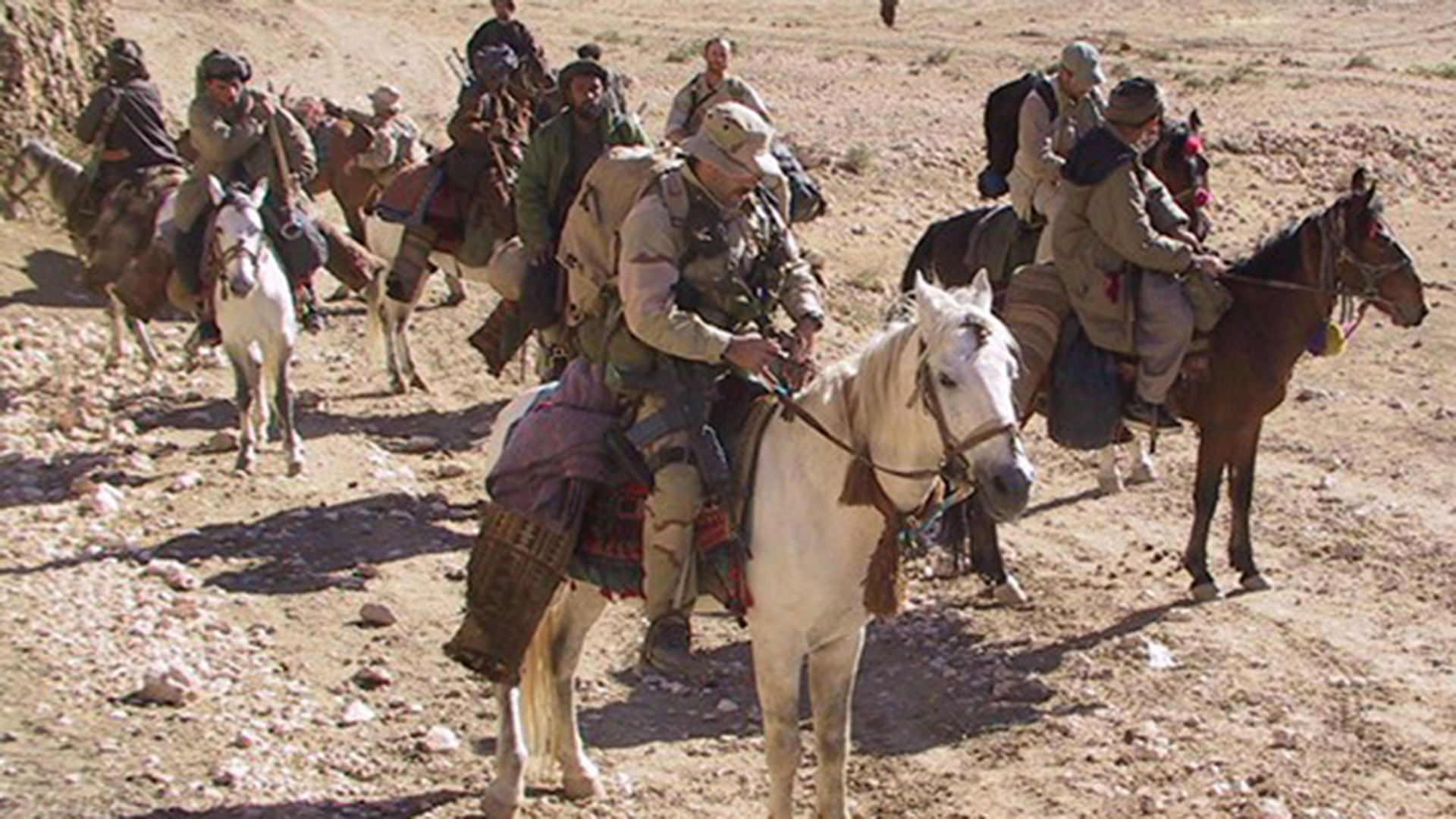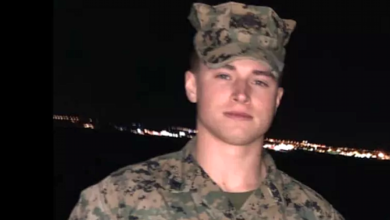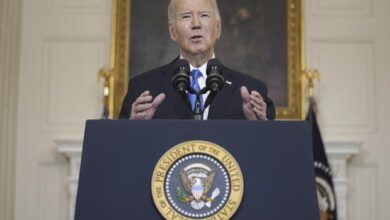Legendary Air Force Combat Controller, ‘Horse Soldier’ dies at 51

Retired Air Force Chief Master Sgt Alan T. Yoshida, a combat controller who was awarded the Silver Star as one of the original “Horse Soldiers” that routed the Taliban in 2001, died peacefully on Dec. 9 at the age of 51, his former wife Kelly Marshall confirmed.
“He was a wonderful father,” Marshall told Task & Purpose. “He loved his kids dearly. He loved his job more than anything. I asked him multiple times about his career, and he would do that job over and over and over with no doubts in his mind. He’s the most humble man I’ve ever met in my life.”
Yoshida served in the Air Force from February 1991 until August 2019 and in addition to the Silver Star, his other military awards include the Bronze Star with “V” device and Purple Heart, according to the Air Force.
In the early days of war in Afghanistan, Yoshida called in dozens of airstrikes that led to the liberation of Kandahar, but he was badly wounded in a December 2001 friendly fire incident, Marshall said. He was frustrated that his injuries prevented him from later deploying to Iraq.
Yoshida was among the first wave of special operators dispatched to Afghanistan in 2001. Officially dubbed Task Force Dagger, the teams are often remembered as the “Horse Soldiers” for the often-horse mounted campaign they led with the Northern Alliance and other groups against the Taliban. Though the teams were largely Army Special Forces soldiers, they rode with Air Force operators like Yoshida who called in vital air support throughout the campaign.
Yoshida received the Silver Star, the U.S. military’s third-highest award, for his actions from Nov. 30 to Dec. 4, 2001 that culminated in the Taliban surrendering Kandahar.
Subscribe to Task & Purpose Today. Get the latest military news and culture in your inbox daily.
Yoshida was attached to an Army Special Forces team led by now retired Army Lt. Col. Jason Amerine. Their mission was to infiltrate Afghanistan with Hamid Karzai, who later became the country’s president, and start an insurgency against the Taliban.

About 72 hours after their infiltration, the team had to defend the city of Tarin Kowt against a Taliban force of between 500 and 1,000 fighters after their Afghan allies had retreated, Amerine told Task & Purpose.
“Alan directed airstrikes at the edge of town, protected only by the team, to defeat the attack,” Amerine said. “The team could have been overrun and killed at any time, but the men stood their ground. That victory gave Hamid Karzai the credibility he needed to be taken seriously by both the Taliban and the Pashtun. The Taliban claimed they lost 1000 men to Alan’s airstrikes that day.”
Later, on the night of Dec. 3, 2001, Yoshida and the team were near Sayyd Alma Kalay when the Taliban launched a counterattack in an attempt to recapture the town, his Silver Star citation says.
“Over the next eight hours, despite being outnumbered two to one and in grave danger of being overrun, Sergeant Yoshida orchestrated numerous danger-close air strikes, crushing the Taliban attack and forcing the enemy to retreat to the southern side of the river, saving both his team members and hundreds of Afghanis in the nearby town,” his Silver Star citation says.
On the following day, Yoshida braved intense machine gun and rocket propelled grenade fire as he accompanied friendly forces on an attack on a hilltop that overlooked the only bridge in the region that spanned the Arghendab River.
He was able to plot the enemy positions, determine which munitions aircraft should use to attack them, and developed aircraft attack restrictions – all while under heavy fire. As a result of his work, the Taliban positions were obliterated, and the bridge remained intact.
“Staff Sergeant Yoshida’s heroic actions prevented a second friendly retreat and directly resulted in the occupation of the critical hilltop by friendly forces,” his award citation says.
Less than 24 hours later, the Taliban requested a ceasefire and dispatched a delegation to surrender Kandahar to Hamid Karzai’s forces.
Yoshida and his team did not attend the surrender because they had been mistakenly bombed by a U.S. B-52 bomber, killing three Army special operators along with dozens of Afghan fighters, Amerine said.
“Alan was badly wounded on December 5th, 2001,” Amerine said. “This time of year weighs heavily on all of us, every year. It made it all the more tragic for him to die at such a young age and close to such a terrible anniversary for all of us.”
Amerine said he initially put Yoshida in for an Air Force Cross for his bravery, but it was reduced to a Silver Star.
“The DOD [Department of Defense] later recognized it made mistakes with the awards process,” Amerine noted. “If the mission occurred several years later, it might have been approved.”
Air Force Lt. Gen. Tony D. Bauernfeind, head of Air Force Special Operations Command, recounted Yoshida’s bravery in Afghanistan in a Facebook post paying tribute to the legendary combat controller.
“While his actions on those days alone are enough to write him into our history books, Yosh was so much more than just an operator,” Bauernfeind wrote. “In the years that followed, he continued to pour into others, sharing his experience and wisdom far and wide throughout AFSOC and Air Force. Among his notable accomplishments is that he was one of the primary architects of generational technological advancements and equipment modernization for the Special Tactics force.”
A memorial for Yoshida is scheduled for Dec. 16 in Hondo, Texas, according to the Combat Control Foundation, a non-profit organization that provides support to combat controllers and their families.
Yoshida continued to help the Air Force special operations community by supporting the Combat Control Foundation and other groups after he retired, Bauernfeind wrote.
“CMSgt Yoshida,” Bauernfeind wrote, “Thank you for your service and dedication to our nation, AFSOC and your fellow Air Commandos.”





